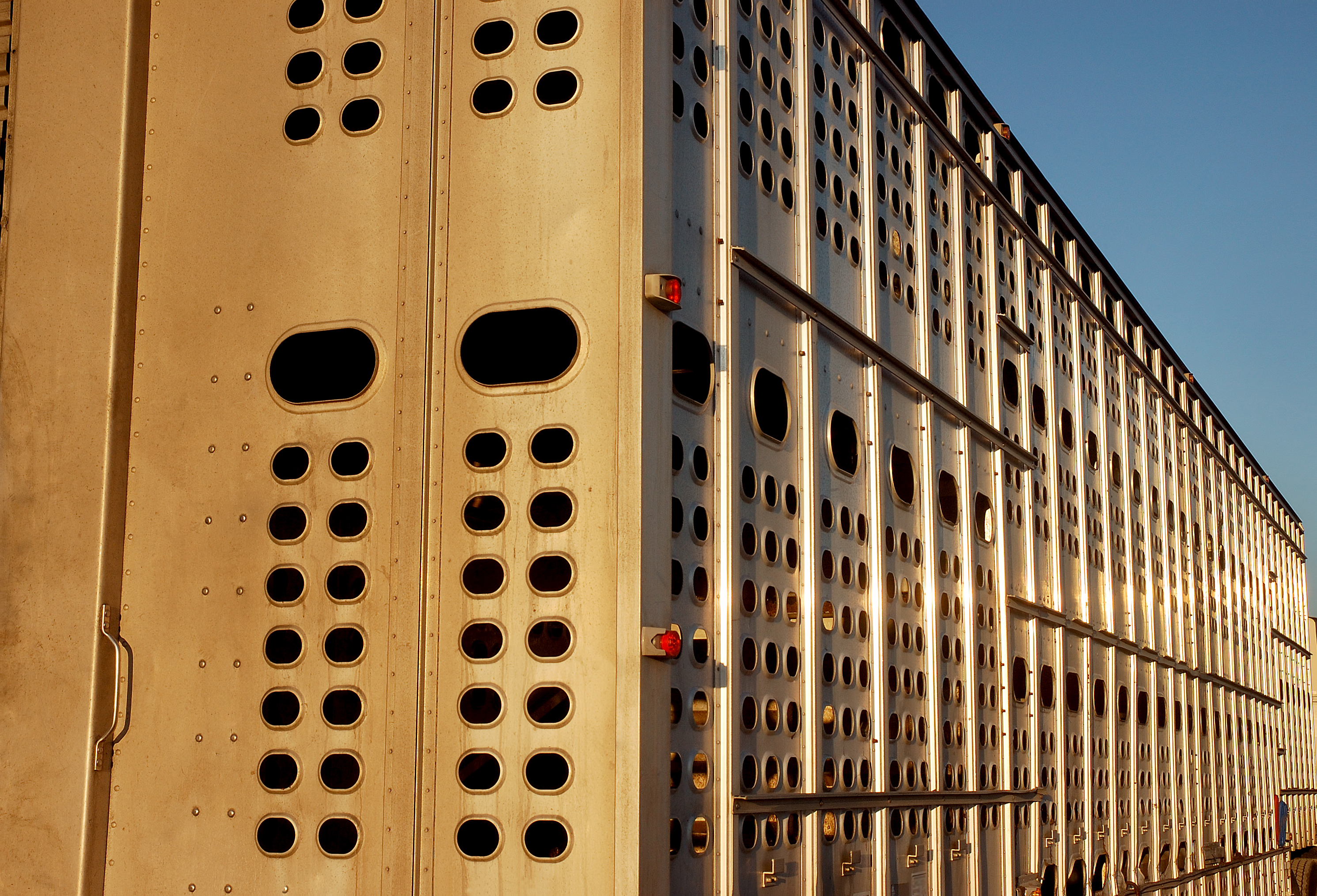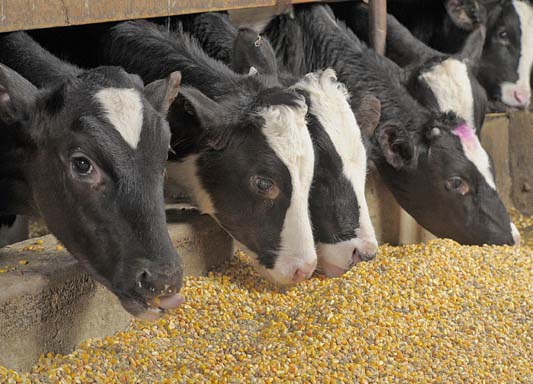Biosecurity in the Veal Industry
Page 08 /
Exploring Salmonella Dublin
Due to the rise of antimicrobial resistant bacteria, implementing biosecurity practices to prevent the entry and cycling of pathogens, and to control outbreaks is critical. However, information from the European veal sector suggests that biosecurity measures on veal farms may not be implemented as often as with some other industries.
Introduction
Specifically, a study in Belgium found that1:
- On average, 124 calves came from 100 different farms of origin
- Farm-specific clothing was rarely used, especially for advisors
- Only 55% of farms cleaned and disinfected after each production cycle
There have been some biosecurity factors associated with antimicrobial use in veal farms. Specifically, farms with a larger number of calves entering into the farm, larger number of calves per pen, no quarantine at arrival to the facility, and shared air space between different groups had a higher level of antimicrobial use6. Another unique feature of veal farms is the high degree of commingling between calves originating from different locations, which allows infected calves to spread disease rapidly throughout the farm where they are raised. Because of this, internal biosecurity measures are imperative to the success of a veal operation, and comprehensive biosecurity programs can benefit the veal industry by improving disease prevention.
This FAAST review will highlight the components of a successful veal farm biosecurity program using Salmonella Dublin as an example.
What is Salmonella Dublin?
Salmonella Dublin is a bacterium that can infect cattle and is resistant to many currently available antimicrobials. It is a zoonotic pathogen, meaning that humans, as well as animals, can be infected. Salmonella Dublin is an emerging disease in Ontario, and Canada; however, the extent of infection within the veal and dairy industries is not known.
Salmonella Dublin is first noted on veal farms with respiratory disease in calves that fails to respond to antimicrobial treatment, or sudden death of calves with no other clinical symptoms2. Clinical signs can initially appear in a few individuals before spreading to entire groups of calves, causing high levels of mortality. Salmonella Dublin often shows clinical signs in calves 2 to 12 weeks of age, but disease can occur in calves up to 6 months old. The risk of mortality on veal farms that have been infected with Salmonella Dublin is higher than in uninfected farms, even after an initial outbreak is over3. Salmonella Dublin has severe consequences since it is resistant to many antimicrobials, and can impact human, as well as animal health.
Implementing strong biosecurity measures can mitigate the risk of introducing, and spreading these bacteria on farms.
Biosecurity and Salmonella Dublin
Introduction of Salmonella Dublin into a veal herd comes from infected animals, who may initially look healthy, shedding the bacteria at high levels in their feces. The main route of transmission for this disease is through the fecal-oral route, where susceptible animals ingest feces, feed, or water that has been contaminated with manure from an infected animal. In some cases, Salmonella Dublin can be spread through the air in barns that have a high stocking density, poor ventilation, or when manure is aerosolized through pressure washing2.
A combination of external and internal biosecurity measures will mitigate the risk of Salmonella Dublin on your farm.
External Biosecurity
Introduction of Animals
Due to the nature of the veal industry, where calves from several dairy farms are brought together at a single location, it is not possible to maintain a closed herd. Diseases are potentially introduced with each new group of calves arriving to the farm, which presents a major challenge and highlights the importance of internal biosecurity measures. Purchasing calves from fewer farms, or farms with a known negative disease status, could reduce the risk of bringing Salmonella Dublin to your farm.
People
Even a small dose of Salmonella Dublin can infect a calf. Therefore, ensuring that all visitors coming onto your farm wear clean coveralls and boots can reduce the risk of contaminated manure entering the property and introducing disease to your calves.
Vehicles and Equipment
Livestock trailers can bring Salmonella Dublin into a facility via contamination with manure from older cattle. When transporting young, susceptible calves, trailers should be cleaned and disinfected to prevent infection.
Since the infective dose of Salmonella Dublin is low2, your herd has an increased risk of becoming infected if you neighbour a farm with a positive disease status4. Ensuring all shared equipment is clean and disinfected prior to use can reduce the chance of equipment being contaminated with manure, and prevent the introduction of Salmonella Dublin in your herd.
Internal Biosecurity
Considering that veal calves are brought from multiple locations to be raised together, internal biosecurity is imperative in controlling Salmonella Dublin.
Having a high-level of internal biosecurity will drastically reduce the risk of having an outbreak, or having recurring cases of Salmonella Dublin on the farm.
Management
To best manage this bacteria, there are several critical practices to have in place:
-
1. All-in and all-out management
-
2. Isolation of sick calves
-
3. Appropriate stocking density
Cleaning and Disinfection
Cleaning and disinfection is important in reducing the presence of Salmonella Dublin. Particularly, when using all-in and all-out management, where all critical control points, housing, feeding equipment, and other surfaces that come into contact with manure, are cleaned and disinfected prior to new calves being introduced. Regardless of management strategy, critical control points should be routinely disinfected, especially considering that Salmonella Dublin can survive for months in cattle manure and soil, and even years in dried feces2. To ensure that the disinfection process is effective, livestock barns and calf pens need to be properly cleaned before applying disinfectant5.
See calfcare.ca for cleaning and disinfecting recommendations and work with your veterinarian to develop a protocol!
Personnel
Personnel can act as a route of disease transmission, especially when wearing coveralls and boots contaminated with manure. Therefore, all coveralls and boots should be cleaned and disinfected frequently to prevent Salmonella Dublin transmission. Due to the zoonotic nature of this disease, personnel should wear gloves, and wash their hands thoroughly after working with calves. When working with calves, they should be handled in the order of youngest calves first, followed by older calves, and lastly working with sick calves, unless they require immediate medical assistance. It is critical to ensure that all farm personnel who work with calves understand why management practices are implemented and participate in biosecurity protocols.
Your veterinarian may be an excellent resource to help staff and farm personnel understand the “why” of each management practice, and how to properly implement these practices on your farm.
Take Home Messages
Salmonella Dublin is an emerging bacteria in Ontario that causes significant disease when introduced to a farm. Purchased veal calves should come from dairy farms with a known negative disease status, and all veal farms should practice high-level internal biosecurity to reduce risk of exposure to Salmonella Dublin.
Work with your veterinarian to determine the best strategy to prevent, or control, Salmonella Dublin on your farm.
For more information on this topic, see www.calfcare.ca Salmonella Dublin factsheets.
References
- Damianns B, V Renault, S Sarrazin, et al. 2019. Biosecurity practices in Belgian veal calf farming: Level of implementation, attitudes, strengths, weaknesses and constraints. Prev Vet Med. 172:104768.
- Nielsen, L.R. 2013. Review of pathogenesis and diagnostic methods of immediate relevance for epidemiology and control of Salmonella Dublin in Cattle. Veterinary Microbiology. 162:1-9.
- Nielsen, T.D., A.B. Kudahl, S. Østergaard, and L.R. Nielsen. 2013. Gross margin losses due to Salmonella Dublin infection in Danish dairy cattle herds estimated by simulation modelling. Prev Vet Med. 111:51-62.
- Henderson, K, and C. Mason. Diagnosis and control of Salmonella Dublin in dairy herds. In Practice. 39
- Sockett DC. 2021. Salmonella in dairy calves: Why do outbreaks occur in well managed herds? AABP Recent Graduate Conference Proceedings. 54:66-69.
- Bokma, J, J Dewulf, P Deprez, and B Pardon. 2018. Risk factors for antimicrobial use in food-producing animals: disease prevention and socio-economic factors as the main drivers? Vlaams Diergeneeskundig Tijdschrift. 87:188-200.

